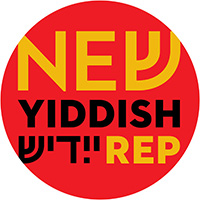What is authenticity? This is not the question I thought I’d be wrestling with right now as I sit at my new home-away-from-home inside my home with thoughts of spread and infection rate and essential workers and PPE all swirling around in my brain like viral particles inside a half-empty subway car without any consideration for social distancing guidelines. Rummaging in the dusty drawers of my mind I find a freshly cobwebbed memory of an early day on-set in Berlin: we are discussing the frequency of blessings and other rituals in Chasidic Judaism and how to portray them in our series. The excited voice of Maria Schrader in her charming accent breaks through the fog of my quarantine-fatigued brain: this is not a documentary about Chasidic Judaism—it is a story about people’s lives, people who happen to be Chasidic Jews. This is a truism that I will access and reexamine in my brain repeatedly over the coming weeks and months.
Why does authenticity matter? Well, luckily that’s a question that doesn’t require much rumination at all. As a Chasidic pubescent child growing up in Borough Park, Brooklyn, in the 1980s, my exposure to the world outside the walls of our community was less than what is necessary to develop a polaroid—the level of technology in my life no more advanced. And yet, I spent years of my life gorging on every “secular” book I could get into my hands and away from prying eyes. Those books were portholes into a world right outside and yet distant realms away. They were my lifeline to another existence, one as beautiful and impossible as a world in which trans women can be rabbis and officiate at gay weddings while running for president. And it was through this line that I managed to learn about other existences at once close to and distant from my own. Existences like that of a black girl in the Confederate South or that of a Native American in the wild west. And learning about those lives made me feel connected to a larger experience.
But it surpassed that. Through these cracks in our proverbial gates, vast possibilities filtered through and invaded my daydreams.
All that came to a thundering halt when I blundered upon a film called A Stranger Among Us. My brain slumped in horror inside my skull at the gross mischaracterization and lazy treatment of the Hasidic world depicted therein. Chasidim were Old-Worldly and almost Victorian in their demeanor; characters spoke a mixture of unintelligible Yiddish and Hebrew in unnatural dialects; in short, they were otherworldly and unrelatable—their very existence foreign to my own. It was plain they failed to consult anyone attached to Hasidism, or for that matter an orthodox community of any stripe. And this laxity spoke mountains. It meant that the authenticity of the characters and their environments did not matter at all to Hollywood filmmakers and so I could draw no conclusions from any of the dozens of films I’ve seen that described other groups and cultures. Nothing I’d seen was reliable and I had no entree into that world, real or vicarious.
This was a devastating blow to my self-education and it instilled me with a unique sense of perspective on authenticity in storytelling—one that accompanied me wherever I went, whether the Ultra-Orthodox college I attended, the Jewish but secular law school I was enrolled at, the decidedly non-Jewish white-shoe law firm I worked at, and finally as an actor, writer and producer, the world of theater and cinema that I participated in—through it all, I held onto this straw of verity determined not to let down that young Hasidic boy watching television in their parents’ basement in the waning hours of the night.
